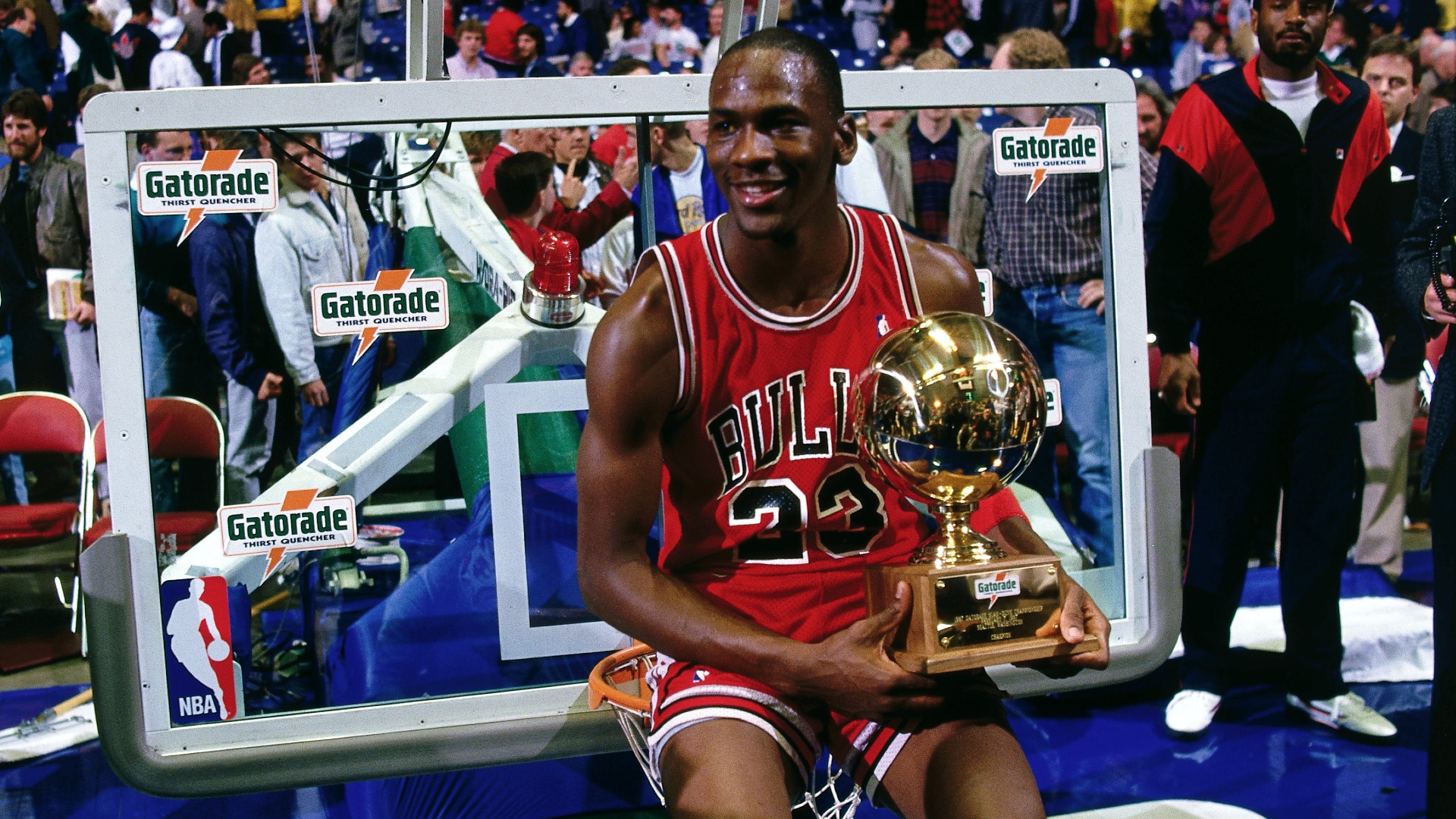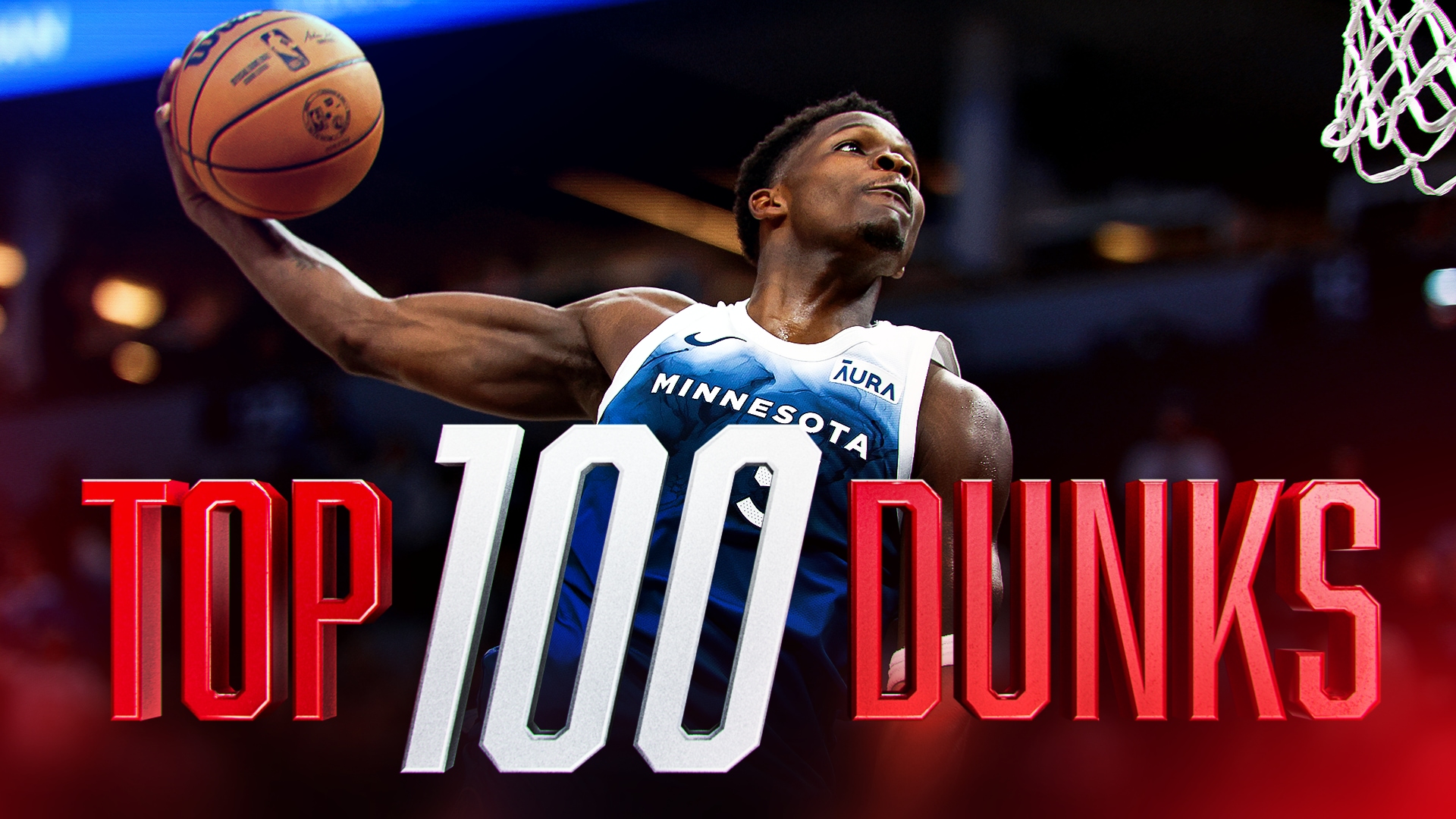Anthony Edwards threw down a viral dunk over John Collins last season that set the NBA world abuzz.
Season Dunk Score Leaders: See which dunk rank the highest this season on the Dunk Score Leaderboard.
Daily Dunk Score Leaders: Each night, the top five Dunk Scores will be updated in real time on NBA.com/Stats. View the top right column on desktop and below Player News on mobile devices.
Nothing gets NBA fans out of their seats like monster dunks.
A sensational slam instantly goes viral — racking up views, likes and shares across social media and leading top 10 lists on highlight shows — but those numbers don’t necessarily capture the greatness of the dunk.
What if there was a way to analyze every dunk in every NBA game and find out which slam rises above the rest?
Introducing the “Dunk Score” from the NBA Stats team.
No, there will not be a judging panel courtside at every game holding up scores. Instead, the Dunk Score takes into account over 25 player tracking characteristics — including vertical jump, takeoff distance, ball height, ball speed and defender proximity — to capture all aspects of the dunk and compiles that data within seconds to produce a composite score.
So how does this happen in real time?
It’s courtesy of the NBA’s player tracking data and innovative data science.
Throughout each NBA game, NBA official tracking data produces a location (x,y,z) for 29 different points on all 10 players’ bodies 60 times per second. That results in a stream of the location of every player’s head, shoulders, hands, hips, feet and more throughout the game. Add that to the location (x,y,z) of the ball and the full context of every play is able to be analyzed.
From there, the NBA Stats team is able to leverage the tracking data to calculate the meaningful features needed to make Dunk Score possible. After that, there’s an additional layer of data science in the form of an NBA-specific mathematical model that weighs the value of each feature to ultimately output the final Dunk Score. Essentially, it turns the unparalleled athleticism we all witness with NBA dunks and debate about in our favorite forums into empirical numbers.
The final Dunk Score is broken down into four subscores – Jump, Power, Style and Defensive Contest. Each characteristic we calculate falls into one of these categories:
Jump: The jump is the key to any dunk. This group of features includes all the measurements that quantify the athleticism of the jump itself. The key metrics include the distance the player is from the hoop when he leaves the ground and the maximum vertical jump height during the course of the jump.
Power: When it comes to the Dunk Score, the more power, the better. Power is demonstrated by the speed of the ball as it goes through the hoop as well as some additional angular velocities of the player’s arms through the course of the dunk.
Style: The more power the better, but not if it comes at the expense of style. The best dunks entertain. The Dunk Score would be incomplete if we didn’t credit for the alley-oops, 360’s and windmills. It’s a bit more subjective than other measurements, but the evaluation is consistent from dunk to dunk and vitally important to capturing the quality of a dunk.
Defensive Contest: All things being equal, the same dunk done on a 1-on-0 breakaway isn’t as impressive as doing it against a defender trying to get the block. There’s a reason why they put these dunks on posters. The calculations in the Defense subscore look at whether a defender is between the dunker and the hoop and how high above the rim the defender’s hands get to block the shot.
And don’t forget an attempt to draw a charge. Tip of the cap to the defenders who are willing to stand in there to try to take a charge, but if the dunker decides to try to jump over the defender, that courageous attempt to draw a charge might just add points to the dunk score.
Just like any debate over the best dunk, the sub-scores are a blend of objective measurements and subjective evaluation. The subscores are all given weights and put together into a model that produces the final quantified value of the dunk. It all happens in a matter of seconds and we hope it settles (or starts) years of debate around the best in-game dunks.









